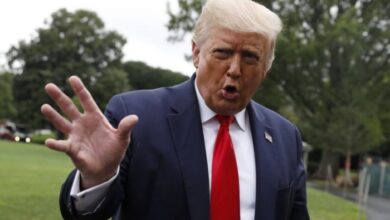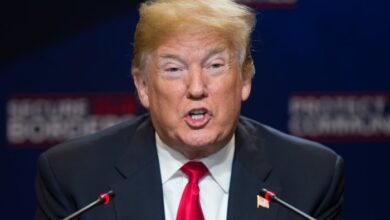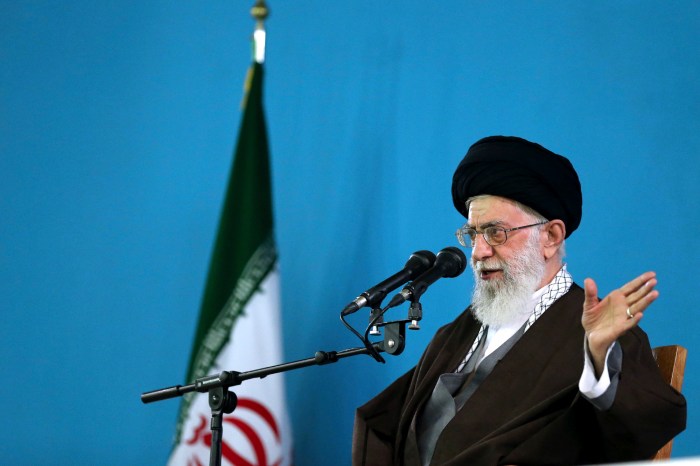
Us iran tensions explainer trump khamanei – US-Iran tensions explainer trump khamanei: This deep dive explores the complex relationship between the United States and Iran, focusing on the crucial period marked by the Trump administration and Ayatollah Khamenei’s leadership. We’ll examine historical context, Trump’s policies, Khamenei’s influence, key events, international implications, and the role of the nuclear deal and sanctions.
From the historical backdrop of US-Iran relations to the immediate consequences of recent events, this explainer provides a comprehensive overview of the factors driving these tensions. Understanding the intricacies of this conflict is essential to comprehending its far-reaching global impact.
Historical Context of US-Iran Tensions
The fraught relationship between the United States and Iran is a complex tapestry woven from historical grievances, geopolitical maneuvering, and ideological clashes. Understanding this history is crucial to comprehending the current state of affairs and the enduring tensions that persist. This overview explores key events and turning points, examining the roles of specific leaders and geopolitical factors that have shaped the trajectory of this relationship.The evolution of US-Iran relations has been marked by periods of cooperation and intense hostility, often driven by divergent interests and interpretations of the world order.
This historical context, including the election of Trump and the rise of Khamenei, provides critical insight into the current dynamic. The timeline below illustrates significant interactions between the two nations.
Key Events in US-Iran Relations
The historical relationship between the United States and Iran is characterized by a series of events that have significantly shaped their current interaction. These events have ranged from periods of cooperation to intense conflicts, with different leaders and geopolitical factors playing significant roles. Understanding these events provides a clearer perspective on the present state of affairs.
| Date | Event | Significance |
|---|---|---|
| 1953 | The Iranian coup d’état | The US and UK orchestrated the overthrow of Iranian Prime Minister Mohammad Mosaddegh, installing the Shah, which deeply impacted Iranian public opinion and fostered distrust towards the US. |
| 1979 | Iranian Revolution | The overthrow of the Shah and the establishment of an Islamic Republic profoundly altered the political landscape of the Middle East, leading to a significant shift in US-Iran relations. |
| 1980 | Iran-Iraq War | The war significantly impacted the regional balance of power, affecting the relationship between Iran and the US. |
| 1988 | Iran Air Flight 655 | The downing of the Iranian airliner by the US Navy highlighted the potential for catastrophic miscalculation and the ongoing tensions between the two nations. |
| 1990s | US sanctions against Iran | The imposition of sanctions marked a significant escalation in the adversarial relationship between the US and Iran. |
| 2000s | Nuclear program disputes | Differences regarding Iran’s nuclear program significantly increased tensions and led to international sanctions and diplomatic efforts. |
| 2015 | Iran nuclear deal | The Iran nuclear deal, while aiming for de-escalation, faced considerable political opposition and ultimately failed to resolve underlying issues. |
| 2018 | Trump administration withdrawal from the Iran nuclear deal | The withdrawal significantly exacerbated tensions, signaling a shift in US foreign policy and a return to more confrontational tactics. |
| 2020 | Killing of Qassem Soleimani | The assassination of Iranian General Qassem Soleimani triggered a series of escalating tensions and prompted a significant regional response. |
Role of Specific Leaders
The evolution of US-Iran tensions is intrinsically linked to the actions and policies of various leaders on both sides. The interplay between presidents and supreme leaders has significantly impacted the relationship. For example, the policies of the Shah of Iran, Mohammad Mosaddegh, and the Ayatollah Khomeini profoundly affected the trajectory of the relationship. Furthermore, figures such as President Trump and Supreme Leader Khamenei have played critical roles in shaping the current state of affairs.
Geopolitical Factors
Geopolitical factors have been instrumental in shaping the US-Iran relationship. The region’s strategic importance, particularly concerning oil supplies and regional influence, has created a constant tension. Conflicts in neighboring countries and competition for regional dominance have also fueled the animosity between the two nations.
US-Iran tensions, particularly under Trump and Khamenei, are a complex issue. While analyzing those fraught political dynamics, it’s interesting to note parallels in the Netflix series “Karma,” which offers a unique perspective on cause and effect. The show’s ending, as explained in this article karma netflix ending explained , highlights how actions have consequences. Ultimately, understanding the past actions of US and Iranian leaders, as seen through this lens, can help us grasp the current complexities in these tensions.
Trump Administration Policies Regarding Iran
The Trump administration’s approach to Iran was dramatically different from its predecessors, marked by a significant shift in policy. This shift, driven by a perceived need to address Iran’s nuclear program and regional influence, fundamentally altered the delicate balance of power in the Middle East and led to heightened tensions. The administration’s actions had far-reaching consequences, impacting not only bilateral relations but also regional stability.
Reasons Behind the Policies
The Trump administration’s Iran policy was largely predicated on a belief that the previous Iran nuclear deal (JCPOA) was insufficient and detrimental to US interests. Critics argued that the deal did not adequately address Iran’s ballistic missile program and its support for regional proxies. The administration also cited Iran’s destabilizing activities in the Middle East as a key concern.
A core tenet of this approach was the belief that maximum pressure tactics would force Iran to negotiate from a position of weakness.
Impact on the US-Iran Relationship
The implementation of these policies significantly deteriorated the US-Iran relationship. The withdrawal from the JCPOA and the imposition of sanctions, including those targeting Iranian individuals and entities, led to a sharp escalation of tensions. This resulted in reciprocal actions by Iran, such as the scaling back of its commitments under the JCPOA and increased support for regional proxies.
The policies also contributed to a climate of mistrust and animosity between the two nations.
Comparative Analysis with Previous Administrations
The Trump administration’s approach to Iran stood in stark contrast to previous administrations. While past administrations engaged in diplomacy and negotiation with Iran, often through multilateral agreements, the Trump administration adopted a more confrontational stance, prioritizing sanctions and pressure tactics. This approach was a radical departure from the established norms of US-Iran relations.
Comparison Table of Different Administrations’ Approaches
| Administration | Approach | Key Actions | Impact on US-Iran Relations |
|---|---|---|---|
| Obama Administration | Diplomacy and negotiation through the JCPOA | Negotiated the JCPOA, aimed for diplomatic resolution | Temporary easing of tensions, but still faced challenges |
| Trump Administration | Maximum pressure campaign through sanctions and withdrawal from JCPOA | Withdrew from the JCPOA, imposed strict sanctions | Significant deterioration of relations, heightened tensions |
Ripple Effects on Regional Relations
The Trump administration’s policies had significant ripple effects throughout the Middle East. The increased tensions with Iran emboldened some regional actors to take more assertive stances, while others sought to mediate. The uncertainty surrounding the US commitment to regional stability encouraged some countries to pursue alternative alliances or security arrangements. The impact was uneven, with some countries experiencing increased instability while others benefited from the perceived weakening of Iranian influence.
The disruption of trade and investment flows due to sanctions also impacted the economies of several regional countries. For instance, the policies created uncertainty for companies and investors operating in the region, affecting business decisions. This demonstrates the complex and interconnected nature of regional relations and the impact of external policies.
Khamenei’s Role and Influence
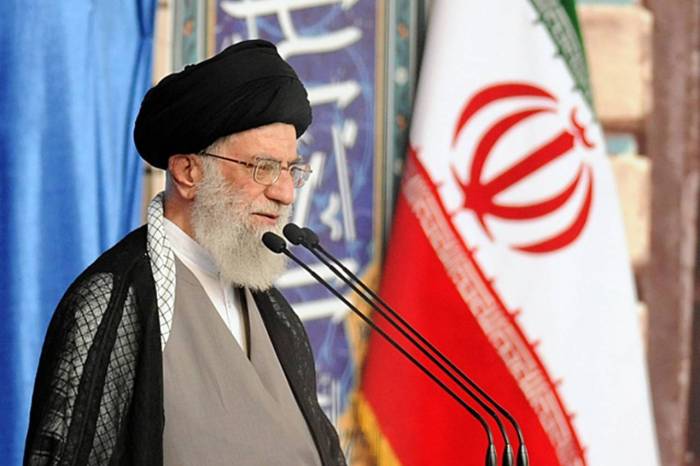
Ayatollah Ali Khamenei, Iran’s Supreme Leader, holds a unique and powerful position in shaping the country’s foreign policy. His authority extends beyond the typical head of state, encompassing religious and political dimensions. This unique position allows him to exert significant influence on Iran’s stance on international issues, including its relationship with the United States. His interpretations of Islamic principles and his political worldview significantly impact Iran’s interactions with the world.Khamenei’s influence stems from his perceived legitimacy as the highest religious authority in Iran, a position that gives him significant political power.
This authority, coupled with his role as the Supreme Leader, allows him to directly influence the country’s foreign policy decisions, particularly in relation to its interactions with the United States. This unique combination of religious and political power has a profound effect on how Iran approaches international relations.
Ideological Underpinnings of Iran’s Stance on the US
Iran’s stance toward the United States is deeply rooted in ideological principles. The Islamic Republic views the US as a source of opposition to its revolutionary ideals and a threat to its national sovereignty. This perception is often based on historical events, such as the 1953 Iranian coup d’état, and perceived US interference in regional affairs. The US’s support for certain governments and policies in the Middle East are often seen by Iran as undermining Iranian interests.
Comparison of Khamenei’s Approach to Other Iranian Leaders
Compared to other Iranian leaders, Khamenei’s approach to international relations demonstrates a more assertive and uncompromising stance towards the US. While past leaders might have sought more diplomatic avenues, Khamenei’s approach tends to be characterized by a more confrontational rhetoric, often emphasizing resistance to perceived US interference. This approach is rooted in his interpretation of Islamic principles and his understanding of Iran’s national interests.
Khamenei’s Responses to US Actions and Policies
Khamenei’s responses to US actions and policies often involve a combination of diplomatic pronouncements and pronouncements emphasizing resistance. He utilizes various platforms, including speeches and statements through the media, to convey his views and address US actions. His responses range from condemnation of US policies to calls for resistance against perceived threats.
Key Pronouncements on US-Iran Relations
“The United States has consistently acted against the interests of the Iranian nation, and this hostility will continue as long as the United States pursues its current policies.”
“The Islamic Republic of Iran will never yield to US pressure and will continue its resistance against the US’s hostile policies.”
“The US is attempting to destabilize the region, and Iran will not hesitate to defend its interests and those of its allies.”
These pronouncements reflect a consistent pattern of resistance to perceived US threats and a commitment to maintaining Iran’s independence. These statements, across various sources, showcase a unified message of defiance and resilience. This stance underscores the enduring tension between the two nations.
US-Iran tensions, particularly during the Trump-Khamenei era, were complex. While exploring those fraught dynamics, it’s interesting to note how the current focus on medical dramas, like the popular Netflix K-drama “Resident Playbook” resident playbook netflix medical k drama , is captivating viewers. Ultimately, the underlying geopolitical conflicts continue to shape global narratives, including the ongoing complexities of the US-Iran relationship.
Specific Events and Conflicts
The history of US-Iran relations is punctuated by a series of events, often escalating into conflicts, that have shaped the current tense environment. These incidents, ranging from diplomatic disputes to military engagements, have left an indelible mark on the regional landscape and continue to influence global politics. Understanding these specific events is crucial to comprehending the complex interplay of interests and motivations that fuel the ongoing tensions.The conflicts between the United States and Iran are rooted in a complex interplay of geopolitical factors, ideological differences, and historical grievances.
These conflicts are not simply isolated incidents but rather manifestations of a broader struggle for regional power and influence. Analyzing the specifics of each event, the perspectives of both sides, and the impact on regional stability provides a more complete picture of the ongoing tensions.
The 1953 Iranian Coup d’état
The 1953 Iranian coup d’état, orchestrated by the United States and the United Kingdom, significantly impacted the relationship between the two nations. This covert operation aimed to overthrow the democratically elected Prime Minister Mohammad Mosaddegh, who had nationalized the Anglo-Iranian Oil Company (later British Petroleum). The operation was carried out with the goal of installing a pro-Western government in Iran.The coup had profound consequences.
It severely damaged Iran’s trust in the United States and fostered resentment that continues to resonate today. The perceived betrayal by the US fueled anti-Western sentiment and laid the groundwork for future conflicts. Furthermore, the coup highlighted the US’s willingness to intervene in other countries’ affairs to advance its strategic interests.
The 1979 Iranian Revolution and Hostage Crisis
The 1979 Iranian Revolution marked a turning point in US-Iran relations. The overthrow of the Shah of Iran and the establishment of an Islamic Republic led to a significant shift in the country’s political and social landscape. This revolution was met with mixed reactions in the US, with some seeing it as a legitimate expression of Iranian self-determination, while others viewed it as a threat to US interests in the region.The subsequent taking of American embassy personnel as hostages in Tehran, from November 4, 1979, to January 20, 1981, further strained relations.
The crisis lasted for 444 days and became a major source of tension between the two nations. It highlighted the deep mistrust and animosity that had developed between the US and Iran.
US-Iran tensions under Trump and Khamenei were complex, marked by a series of escalating actions and counter-actions. Understanding these dynamics requires a look at the various factors involved, including the role of different actors and their motivations. This is similar to the way AI systems like Claude, a large language model, can be analyzed – its capabilities and limitations can be compared to different political interactions.
To learn more about the definition of Claude AI, check out this helpful resource: definition of claude ai. Ultimately, navigating these kinds of geopolitical conflicts requires careful consideration of the interplay between actors, motivations, and available strategies.
The Iran-Iraq War (1980-1988)
The Iran-Iraq War, a protracted conflict that lasted from 1980 to 1988, had significant implications for US-Iran relations. This war, rooted in territorial disputes, ideological differences, and regional power struggles, was a devastating conflict that impacted both nations deeply.The war, often viewed as a proxy war, had indirect but noticeable effects on US policy toward Iran. The war was also a complex regional conflict that drew in various actors and contributed to the destabilization of the region.
The 1988 Iranian Air Flight 655 incident
The downing of Iranian Airbus A300, flight 655, on July 3, 1988, by the USS Vincennes, is another crucial event in US-Iran relations. This tragic incident involved the accidental destruction of a civilian airliner and the loss of 290 lives. The US claimed the incident was a mistake due to a misidentification of the aircraft.The incident, while a tragic accident, heightened the existing tensions between the US and Iran.
The incident highlighted the risks and dangers associated with military operations in conflict zones. Furthermore, the incident underscored the lack of clear communication channels between the two nations.
Impact on Regional Stability
| Event | US Response | Iranian Response | Impact on Regional Stability |
|---|---|---|---|
| 1953 Iranian Coup d’état | Supported the Shah’s return | Fostered anti-American sentiment | Weakened Iran’s trust in the US, sowing seeds of future conflict |
| 1979 Iranian Revolution and Hostage Crisis | Imposed sanctions and condemned the revolution | Saw the revolution as a victory | Strained relations to a new level, creating deep distrust |
| Iran-Iraq War (1980-1988) | Maintained a position of careful neutrality | Saw the war as a conflict with a hostile neighbor | Created instability and conflict in the region, affecting neighboring countries |
| 1988 Iranian Air Flight 655 incident | Initially denied responsibility, later apologized | Felt a deep sense of betrayal | Further exacerbated tensions and highlighted the lack of communication channels |
International Implications
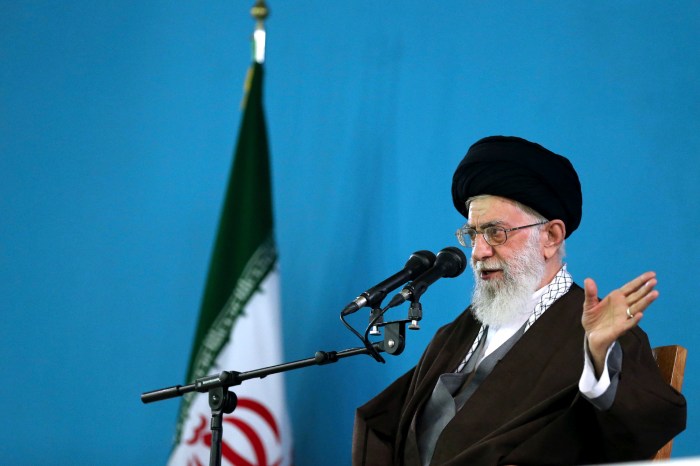
The escalating tensions between the United States and Iran extend far beyond the immediate region. The conflict’s ripple effects are felt globally, impacting everything from energy markets to international security and trade routes. Understanding these broader implications is crucial to comprehending the gravity of the situation.
Global Energy Markets
The US-Iran tensions have a significant impact on global energy markets, primarily through disruptions in oil supply. The possibility of further sanctions on Iranian oil exports, or retaliatory actions by Iran, can lead to price volatility and shortages. This has historical precedent. The 2012 sanctions on Iran resulted in a significant reduction in global oil supply, leading to a noticeable increase in prices.
Analysts predict a similar outcome if the tensions escalate further. A substantial reduction in Iranian oil exports could cause a considerable increase in global oil prices, impacting consumers worldwide and potentially triggering economic instability.
Regional Alliances and Security, Us iran tensions explainer trump khamanei
The US-Iran conflict is a key factor influencing regional alliances and security dynamics in the Middle East. The tensions have fueled proxy conflicts and heightened regional instability, leading to concerns about regional security. The involvement of other regional powers, such as Saudi Arabia and other Gulf states, further complicates the situation. These countries are forming alliances and strengthening their defense capabilities to counter perceived threats.
This has the potential to lead to an arms race, increasing the risk of further conflict.
International Actors and Responses
Several international actors have responded to the escalating tensions between the US and Iran in various ways. The UN Security Council, while not directly involved in the conflict, has the potential to play a significant role in mediating the situation. European powers, while maintaining relationships with both the US and Iran, are trying to find diplomatic solutions to de-escalate the conflict.
China and Russia, for example, have historically maintained a degree of neutrality and are trying to maintain stability in the region. Their actions and responses reflect their geopolitical interests and concerns about the wider implications of the conflict.
Geographical Reach of Tensions
The tensions between the US and Iran are geographically concentrated in the Middle East, particularly in the Persian Gulf and surrounding regions. The conflict has ramifications throughout the Middle East, influencing the political and security dynamics in neighboring countries. The implications of this conflict extend beyond the Middle East, impacting global energy markets, and affecting the security of trade routes.
It is essential to recognize that the impact of this conflict extends throughout the Middle East, not just limited to the areas of direct conflict.
Impact on Trade Routes
The US-Iran conflict directly impacts maritime trade routes, primarily in the Persian Gulf. The Strait of Hormuz, a vital shipping lane for global oil trade, is vulnerable to disruptions if the conflict escalates. The potential for attacks or blockades could severely disrupt the flow of oil and other essential goods. This could lead to significant economic repercussions globally.
The closure of the Strait of Hormuz would have major consequences, creating a crisis in the global energy market, as it’s a critical conduit for oil transportation.
Nuclear Deal and Sanctions: Us Iran Tensions Explainer Trump Khamanei
The Iran nuclear deal, formally known as the Joint Comprehensive Plan of Action (JCPOA), aimed to curb Iran’s nuclear program in exchange for the lifting of international sanctions. This agreement, reached in 2015, was hailed as a diplomatic triumph, preventing Iran from potentially acquiring nuclear weapons. However, the subsequent US withdrawal and re-imposition of sanctions have significantly altered the landscape of the US-Iran relationship.The JCPOA, a complex international accord, involved strict limitations on Iran’s uranium enrichment activities, inspections of its nuclear facilities, and restrictions on its ballistic missile program.
The agreement’s intended outcome was to provide a long-term framework for peaceful coexistence, deterring nuclear proliferation in the region.
Role of the JCPOA in US-Iran Tensions
The JCPOA was intended to reduce tensions between the US and Iran by addressing concerns about Iran’s nuclear program through a verifiable agreement. The deal’s structure was designed to provide assurances that Iran would not develop nuclear weapons, while also providing incentives for Iran to cooperate with the international community.
US Withdrawal from the JCPOA
The US withdrawal from the JCPOA in 2018, under the Trump administration, was a significant event that significantly escalated tensions. The US argued that the deal did not sufficiently address Iran’s ballistic missile program and its support for regional proxies. This decision triggered a renewed cycle of sanctions and a breakdown in diplomatic relations.
Consequences of the US Withdrawal
The withdrawal triggered the re-imposition of US sanctions, which severely impacted Iran’s economy and its ability to participate in international trade. This action also led to a decline in investor confidence and a tightening of international financial restrictions. Many international businesses chose to curtail or halt their operations in Iran due to the heightened risk.
Impact of Sanctions on Iran’s Economy and Society
Sanctions significantly crippled Iran’s economy, leading to inflation, shortages of essential goods, and job losses. The sanctions targeted Iran’s oil exports, financial institutions, and various sectors, hindering the country’s ability to engage in international trade. The economic hardship caused social unrest and political instability.
Types of Sanctions Imposed and their Effect on Iran’s International Relations
The sanctions imposed on Iran were multifaceted, targeting various sectors and entities. This action significantly isolated Iran from the international financial system, damaging its ability to conduct international transactions. The targeted sanctions, including those on individuals and companies, further exacerbated Iran’s international relations with countries that previously cooperated.
- Oil Exports Sanctions: These sanctions aimed to drastically reduce Iran’s oil exports, a major source of its revenue. This impacted Iran’s ability to generate foreign currency and pay for essential imports.
- Financial Sanctions: These sanctions targeted Iranian banks and financial institutions, hindering their access to the international financial system. This made it difficult for Iran to conduct transactions with other countries.
- Arms Sales Sanctions: These sanctions restricted the sale of weapons to Iran, limiting its military capabilities. This significantly impacted Iran’s ability to maintain a strong military presence in the region.
- Other Sectoral Sanctions: Sanctions were also imposed on specific sectors such as transportation, technology, and mining. These further complicated Iran’s economy and made it challenging to operate in those fields.
Epilogue
In conclusion, the US-Iran tension is a multifaceted issue with deep historical roots, profoundly shaped by the actions of key leaders like Trump and Khamenei. The interplay of historical context, policy decisions, and specific events has created a volatile situation with significant regional and international implications. The future trajectory of this conflict remains uncertain, but this explainer has provided a thorough examination of the key components driving the current state of affairs.

